|
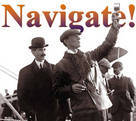
 Up
Up 
 Site Map
Site Map

(You are here.)



Meanwhile...
How about
a little music?
We have a selection
of tunes that were popular during the
first
days of aviation, performed by Sue
Keller, courtesy the
Ragtime Press:
Solace

Scott Joplin 1909
|
|
Available in Française, Español, Português, Deutsch, Россию,
中文,
日本, and others.
 he
Wright Brothers Aeroplane Company web site is divided into several sections; each
section is further subdivided; and so on as necessary to organize the
vast amount of material on this site. The map/outline/table of contents below lists the pages
on this site and shows how they fit in to the overall organization. he
Wright Brothers Aeroplane Company web site is divided into several sections; each
section is further subdivided; and so on as necessary to organize the
vast amount of material on this site. The map/outline/table of contents below lists the pages
on this site and shows how they fit in to the overall organization.
If you're viewing this page in IE (Internet
Explorer), the map is expandable.
If there is a down-arrow ( )
following a section head or title, this indicates that there are more
pages in that section or following that page. Click on the arrow, and
the map will expand, revealing the hidden pages. Click on the arrow again and
that portion of the map will collapse. Viewers using Firefox,
Safari, and other browsers may not have this convenience. )
following a section head or title, this indicates that there are more
pages in that section or following that page. Click on the arrow, and
the map will expand, revealing the hidden pages. Click on the arrow again and
that portion of the map will collapse. Viewers using Firefox,
Safari, and other browsers may not have this convenience.
To navigate to a page on the
outline, click on it's underscored title. Note: If a page has no
link or is "ghosted" in a light gray, this indicates that it is down for updates and/or repairs.
|
|
Navigation
Aids to help you use the museum and find your way around.
|
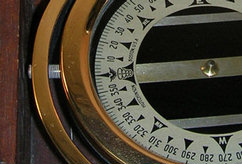
The first navigation devices to be carried aboard airplanes were
gimbaled ship's compasses, such as the old Hutchinson compass shown.
They were mounted on the cockpit floor, between the pilot's legs.
|
|
The story of the Wright brothers, the invention of the airplane,
and pioneer aviation (1799 to 1918).
 |
The Wright Story

|
 |
A History of the Airplane

 |
The Century
Before 
|
 |
The
Decade After

|
 |
Pilots, Planes and Pioneers

 |
Pilots, Planes and Pioneers A
|
 |
Pilots, Planes and Pioneers B |
 |
Pilots, Planes and Pioneers C |
 |
Pilots, Planes and Pioneers D |
 |
Pilots, Planes and Pioneers E |
 |
Pilots, Planes and Pioneers F

|
 |
Pilots, Planes and Pioneers G |
 |
Pilots, Planes and Pioneers H |
 |
Pilots, Planes and Pioneers I |
 |
Pilots, Planes and Pioneers J |
 |
Pilots, Planes and Pioneers K |
 |
Pilots, Planes and Pioneers L |
 |
Pilots, Planes and Pioneers M |
 |
Pilots, Planes and Pioneers N |
 |
Pilots, Planes and Pioneers O |
 |
Pilots, Planes and Pioneers P |
 |
Pilots, Planes and Pioneers Q |
 |
Pilots, Planes and Pioneers R

|
 |
Pilots, Planes and Pioneers S |
 |
Pilots, Planes and Pioneers T |
 |
Pilots, Planes and Pioneers U |
 |
Pilots, Planes and Pioneers V |
 |
Pilots, Planes and Pioneers W |
 |
Pilots, Planes and Pioneers XYZ |
|
 |
Who Was First?

|
|
 |
Aviation's Attic

|
|
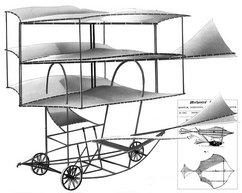
Quite possibly the first fixed-wing aircraft to lift a person into
the air was this "governable parachute" designed by Sir George
Cayley. It lifted a small boy aloft near Brompton, England in 1849.
Cayley later published an improved design in "Mechanics Magazine" in
1852. This flew in 1854 with Cayley's coachman aboard.
|
|
Getting up close and hands-on with the Wright brothers.
|
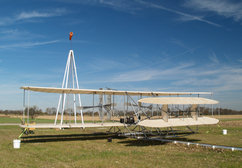
Initial experiments with our replica of the 1905 Wright Flyer III
showed that the Wright catapult system, combined with the thrust of
the propellers, could accelerate the airplane to an airspeed of 29
mph before it reached the end of the launch track.
|
|
Bringing our airplanes and expertise to your school, museum, or
institution.
|
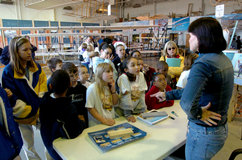
Connie Tobias, a senior pilot with US Airways (21,000 hours!) and
the first woman to successfully pilot the 1903 Wright Flyer (11
seconds!), described her experience to a group of young people at an
exhibit we presented in conjunction with the Aviation Hall of Fame.
|
Company Store
Everything for the Wright enthusiast, from shirts to propellers.
 |
Plans |
 |
Publications |
 |
The Big Stuff |
 |
About Our
Plans |
 |
Terms & Conditions |
|
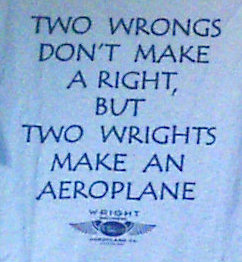
One of the most popular T-shirts from our 2003 Centennial of Flight
collection.
|
|
Checking facts and finding resources about the Wright brothers.
*
**
*** |
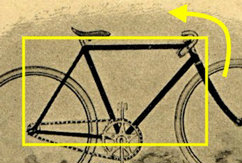
While it's well-known that the Wrights borrowed a lot of bicycle
technology for their Flyers, some of it is as subtle as it is
ingenious. For example, take the frame of a Wright bicycle and
rotate it about 70 degrees and you have a propeller support for a
Wright airplane!
|
|
|
|